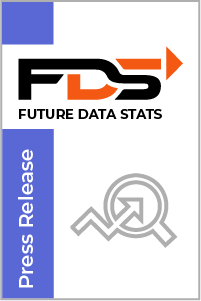
Computer Vision Market to Reach USD 60.23 billion By 2030 | CAGR: 19.2%
The global Computer Vision market size is expected to reach USD 60.23 billion by 2030, registering a compound annual growth rate (CAGR) of 19.2% during the forecast period, according to a new report by Future Data Stats.
The field of Computer Vision has been undergoing remarkable growth and transformation, shaping a technological landscape that continues to captivate industries and individuals alike. This evolution is driven by a convergence of sophisticated algorithms, expanding datasets, and advanced hardware, which together have propelled computer vision into a pivotal role across diverse sectors. From healthcare to automotive, retail to agriculture, the applications are extensive and multifaceted, demonstrating a continuous surge in demand.
Segmentation is a pivotal concept within the realm of Computer Vision, as it encompasses the process of categorizing images into meaningful segments, enabling machines to comprehend visual data with human-like precision. This technique has witnessed significant advancements, pivoting from traditional image thresholding to intricate deep learning architectures like U-Net and Mask R-CNN. Such approaches allow for the identification of objects, boundaries, and regions of interest within images, thereby facilitating enhanced object recognition, scene understanding, and even medical image analysis.
In the realm of medical imaging, computer vision segmentation techniques have revolutionized diagnostics and treatment planning. Magnetic Resonance Imaging (MRI) and Computed Tomography (CT) scans can now be meticulously analyzed through segmentation, leading to the precise identification of tumors, anomalies, and pathological structures. This has empowered medical professionals with detailed insights, enabling them to make informed decisions and provide targeted interventions. Moreover, the automation of these processes through computer vision has significantly reduced the time required for analysis, expediting patient care.
Automotive industries are also leveraging segmentation within computer vision for various applications, most notably in the development of self-driving vehicles. The ability to segment the road scene into discernible objects such as pedestrians, vehicles, and traffic signals is crucial for an autonomous vehicle to make real-time decisions. Through the fusion of segmentation with object detection and tracking, these vehicles can navigate complex environments safely and efficiently. This convergence has not only heightened passenger safety but has also opened doors to innovative transportation models.
Retail is another sector where computer vision segmentation is making substantial headway. E-commerce platforms employ segmentation to enhance the shopping experience by offering personalized product recommendations based on user preferences and behavior. Additionally, segmentation aids in inventory management by accurately counting and categorizing items, minimizing errors and optimizing supply chains. This, in turn, leads to reduced operational costs and improved customer satisfaction, amplifying the overall efficiency of the retail ecosystem.
Agriculture, an unexpected beneficiary of computer vision segmentation, has witnessed the development of precision agriculture techniques. By segmenting crop imagery, it becomes feasible to assess plant health, identify pests or diseases, and optimize irrigation strategies. This targeted approach increases crop yield, minimizes resource wastage, and contributes to sustainable agricultural practices. The integration of segmentation with drone technology further amplifies these benefits, allowing farmers to monitor vast fields efficiently and make data-driven decisions.
The growth of the Computer Vision market is not solely driven by advancements in segmentation techniques; it is also propelled by the convergence of hardware capabilities that accelerate the processing of visual data. Graphics Processing Units (GPUs) and specialized chips like Tensor Processing Units (TPUs) have empowered computer vision algorithms to operate swiftly, making real-time applications feasible. Additionally, the advent of edge computing – performing computations closer to the data source – has further expanded the potential of computer vision in scenarios where low latency is critical.
The future trajectory of the Computer Vision market is undeniably promising. As deep learning models continue to evolve, segmentation will likely become more robust, accurate, and adaptable to diverse domains. The integration of multi-modal data, such as fusing visual information with textual context, could lead to even more comprehensive scene understanding. Furthermore, the ethical implications of computer vision, particularly in terms of privacy and bias, will garner increased attention, necessitating the development of transparent and responsible AI systems.
Computer Vision Market Report Highlights
- The rising demand for automation and efficiency in a variety of industries is the key factor driving the growth of the computer vision market.
- Computer vision is being used in a variety of industries, including manufacturing, healthcare, transportation, and retail.
- The manufacturing segment is expected to dominate the computer vision market during the forecast period.
- North America is the largest market for computer vision, followed by Europe and Asia Pacific.
- The key players in the computer vision market are Intel, IBM, Microsoft, Google, and Amazon Web Services.
Top Leading Players
- NVIDIA Corporation
- Intel Corporation
- Microsoft Corporation
- Amazon Web Services, Inc.
- Alphabet Inc. (Google)
- Qualcomm Technologies, Inc.
- Cognex Corporation
- Sony Corporation
- Texas Instruments Incorporated
- FLIR Systems, Inc.
- National Instruments Corporation
- Basler AG
Computer Vision Market Segmentation
By Type:
- 2D Computer Vision
- 3D Computer Vision
By Application:
- Healthcare
- Automotive
- Industrial Automation
- Retail
- Agriculture
- Security and Surveillance
- Entertainment
- Robotics
- Augmented Reality (AR)
- Virtual Reality (VR)
By Component:
- Hardware
- Software
By Technology:
- Image Processing
- Machine Learning
- Deep Learning
- Neural Networks
- Object Detection
- Image Recognition
- Image Segmentation
By End-User:
- Enterprises
- Consumer Electronics
- Healthcare Institutions
- Automotive Manufacturers
- Retailers
- Agriculture Industry
- Defense and Security Agencies
By Geography:
- North America (USA, Canada, Mexico)
- Europe (Germany, UK, France, Russia, Italy, Rest of Europe)
- Asia-Pacific (China, Japan, South Korea, India, Southeast Asia, Rest of Asia-Pacific)
- South America (Brazil, Argentina, Columbia, Rest of South America)
- Middle East and Africa (Saudi Arabia, UAE, Egypt, Nigeria, South Africa, Rest of MEA)
- Consulting Services
- Tailored Insights
- Syndicated Market Research
- Competitive Intelligence
- Emerging Technologies
- Customer Research
- Market Intelligence
- Industry Development
Our Clients











USA: +1 2345-6789
help@fds.com



